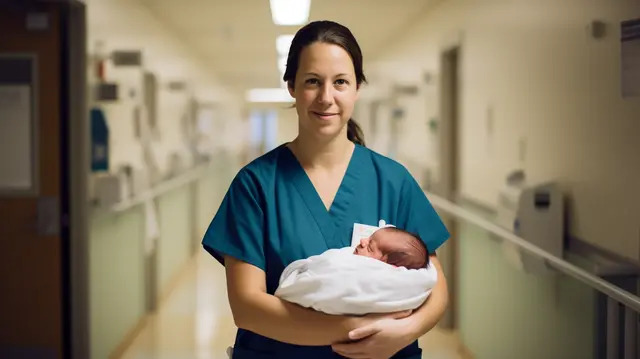Performance Healthcare & Staffing LLC
- We are hiring Registered Nurses, Pharmacists & Doctors for Hospitals in USA. Apply Now !
Labor and Delivery
Recruit labor and delivery nurses to USA
Recruiting labor and delivery nurses or medical staff from to the USA involves several steps to ensure compliance with both U.S. and regulations, as well as meeting professional licensing requirements. Here’s a detailed guide on how to recruit labor and delivery staff from :
1. How we recruit:
Before starting the recruitment process, it is essential to clarify the role and the necessary qualifications.
- Job Role: Labor and delivery staff typically include registered nurses (RNs) specialized in obstetrics, nurse midwives, and sometimes nursing assistants.
- Qualifications:
- For Registered Nurses (RNs): The candidate should hold a nursing degree (Bachelor of Science in Nursing or Diploma) and ideally have experience in obstetrics or labour and delivery.
- For Nurse Midwives: Candidates should hold advanced practice certification or a Master’s in Midwifery.
- A minimum of 2-3 years of experience in a labour and delivery setting is usually preferred.

2. Licensing and Credentialing Requirements:
Labor and delivery nurses from must meet U.S. licensing requirements. This involves credential verification, examination, and licensing.
For Registered Nurses:
- Education Credential Evaluation: Nurses must have their academic credentials evaluated by an agency like the Commission on Graduates of Foreign Nursing Schools (CGFNS) to ensure that their education meets U.S. standards.
- English Proficiency: Nurses must pass an English language proficiency exam, such as the IELTS (International English Language Testing System) or TOEFL (Test of English as a Foreign Language), unless they completed their nursing education in an English-speaking country.
- NCLEX-RN Exam: Candidates must pass the NCLEX-RN (National Council Licensure Examination for Registered Nurses) to obtain a U.S. nursing license.
- VisaScreen Certification: All foreign-educated nurses need a VisaScreen Certificate from CGFNS, which verifies their credentials, English proficiency, and ability to practice nursing in the U.S.
For Nurse Midwives:
- Nurse Midwife Certification: Midwives need to pass the American Midwifery Certification Board (AMCB) exam to become certified nurse midwives (CNMs) in the USA.
- State Licensure Requirements: Each U.S. state has specific licensing requirements for nurse midwives, so it’s important to understand the state-specific criteria where the candidate will be practicing.
3. Visa Options for Labor and Delivery Staff:
The appropriate visa type depends on the qualifications of the candidate and the role they will be filling. Some common visa categories for healthcare workers include:
- H-1B Visa (Specialty Occupation Visa):
- Typically used for specialized nurses (e.g., nurse midwives) or those with advanced practice certifications.
- The candidate must have at least a bachelor’s degree, and the employer must show that the position requires specialized knowledge.
- EB-3 Visa (Employment-Based Third Preference Visa):
- This is the most common visa for registered nurses. The employer must first obtain a Permanent Labor Certification (PERM) from the U.S. Department of Labor to show that hiring a foreign nurse will not adversely affect U.S. workers.
- The employer then files an I-140 (Immigrant Petition for Alien Worker) with USCIS.
- TN Visa (for Canadian or Mexican Nurses):
- This is not applicable for Indian nurses, but it is an option if the candidate holds Canadian or Mexican nationality.
- This is not applicable for Indian nurses, but it is an option if the candidate holds Canadian or Mexican nationality.
4. Visa Sponsorship and Application Process:
Ways Global will sponsor the candidate for a work visa or permanent residency:
- File a Labor Condition Application (LCA): For H-1B visas, the employer must file an LCA with the U.S. Department of Labor, demonstrating that the working conditions and pay are comparable to those offered to U.S. workers.
- Obtain a PERM Labor Certification: For EB-3 visas, the employer must secure a PERM certification to confirm that there are no qualified U.S. workers for the role.
- File I-140 Petition and VisaScreen Certification: Once the LCA or PERM is approved, the employer files an I-140 petition, and the candidate submits a VisaScreen certificate.
5. Support During Immigration and Transition:
- Visa Processing and Licensing Assistance: Provide support with visa processing, scheduling the NCLEX-RN exam, and obtaining state licensure.
- Relocation and Integration Support: Assist with relocation logistics, such as housing, travel, and initial orientation to the healthcare facility.
- Cultural Orientation and Mentorship: Offer training on cultural differences in the healthcare system, communication with patients and staff, and mentorship programs to ease the transition.
